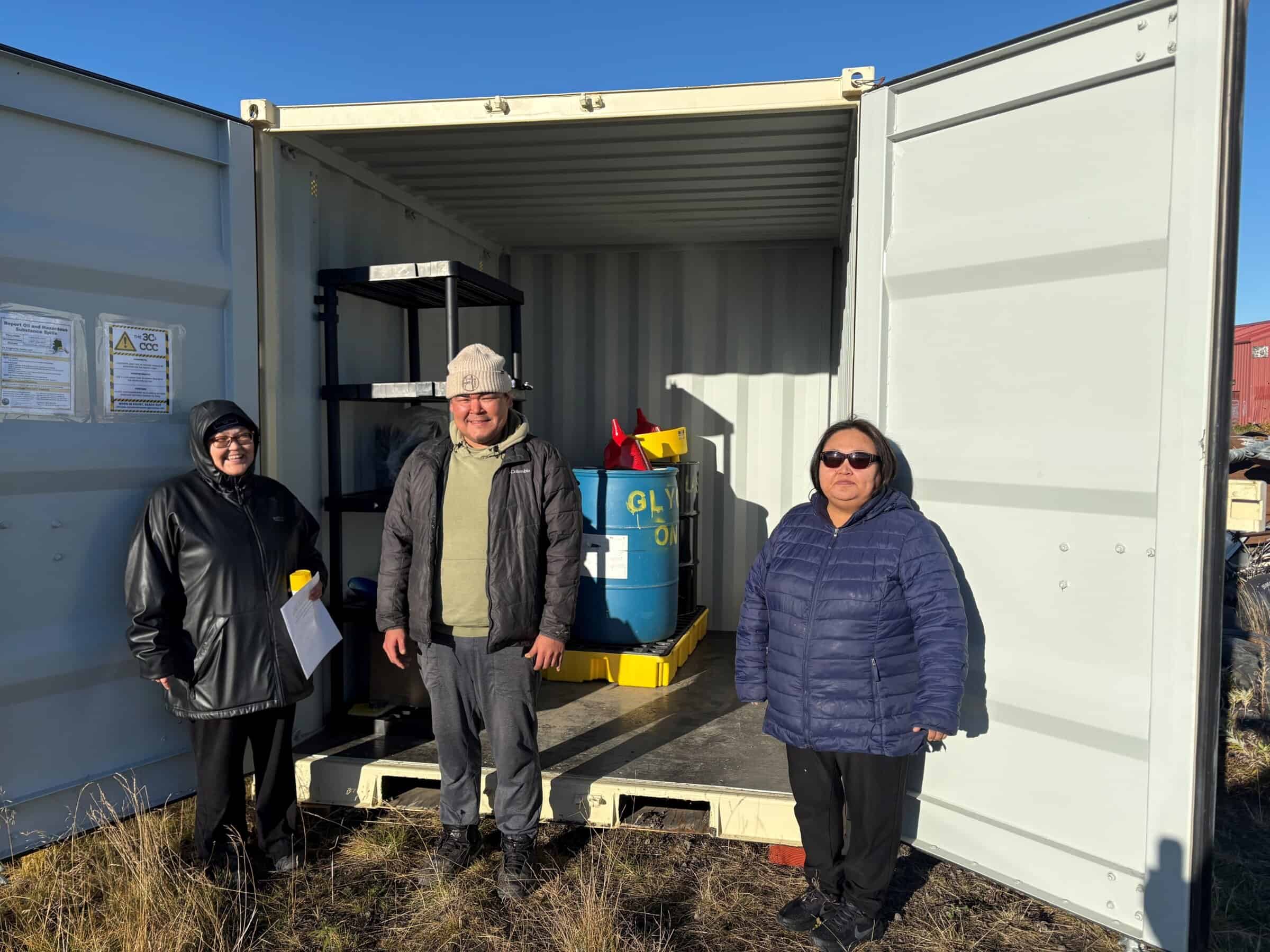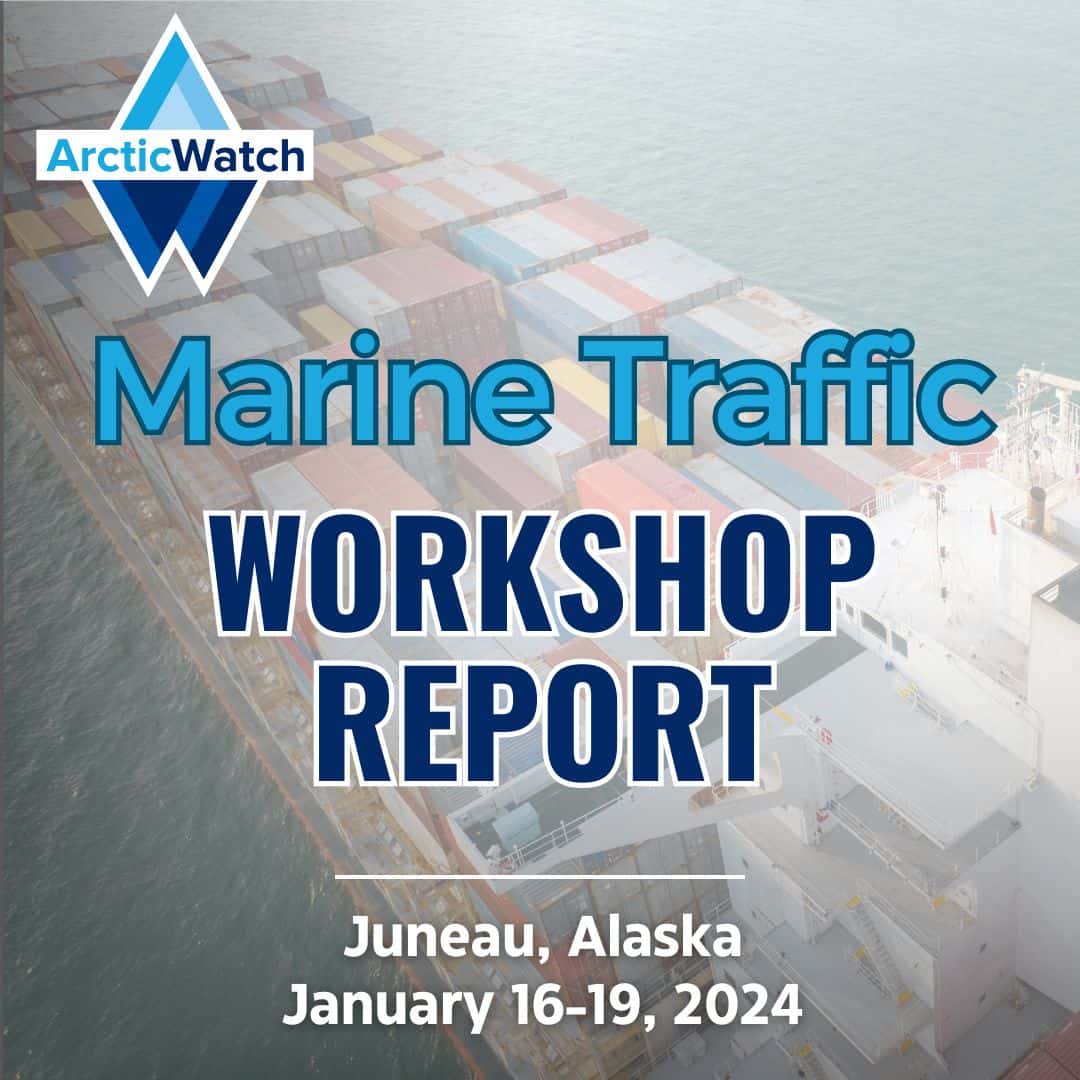Kawerak was requested to submit our views regarding the impact of climate change on the Bering Strait Region communities. As the National Climate Assessment confirmed, climate change is having a disproportionate impact in our region. Kawerak composed the following letter to the Senate Indian Affairs Committee in hopes of partnership and action to address the risks and impacts to our traditional ways of life, economic opportunities and overall well-being associated with climate change. Read Below or download: US-SENATE-indian-climate-change-letter_8-30-2019.pdf
September 9, 2019
RE: Impacts of Climate Change on Bering Strait Region Villages
Kawerak, Inc. is the regional tribal consortium composed of 20 federally recognized tribes in the Bering Strait region. Kawerak received your letter dated July 10, 2019 requesting input from Alaska Native Leaders on the issue of climate change. We would like to offer an evaluation of existing political conditions, resources, and research, and how management decisions historically may have caused multiple-use conflicts or issues between resource values and how climate change has made such management decisions even more complicated. The Region is about the size of West Virginia, with a Population of just over 9000 with a young population and growing. The majority of the region lives a cash & subsistence based economy. 17 of the 20 tribes are not accessible by road only by air year round, most of rural Alaska is infrastructure deficient. Commercial goods are transported by plane during the winter and barge during the summer resulting in high freight costs. Unemployment is high, jobs are scarce. Per the 2010 census 19% of Alaska Natives live below the poverty level. Fuel prices are high with heating fuel and gas costing more $6 a gallon. All tribes have identified ports/harbors/barge landings in their Long Range Transportation Plans.
Environmental Impacts
The Bering Strait region is culturally complex. The indigenous population speaks three distinct languages; Inupiaq, Northern Coastal Yupik, and Saint Lawrence Island Yupik of which there are also subdialects. The region is comprised of 16 villages, Shishmaref, Wales, Diomede, Brevig Mission, Teller, Nome, White Mountain, Golovin, Elim, Koyuk, Shaktoolik, Unalakleet, Stebbins, Saint Michael, Savoonga, and Gambell. One seasonally occupied community of Council. Four tribes are headquartered in Nome: King Island, Nome Eskimo Community, Solomon, and Council, and two in Teller.
The issue of climate change impacts and implementing solutions is incredibly challenging and complex. Kawerak thanks the Indian Affairs Committee immensely for reaching out to tribal leaders on the issue of climate change. People and tribes in the region are incredibly concerned about the impacts of climate change.
Climate change is having clear impacts on the ability of region residents to carry out subsistence activities. With the disappearance of the Bering Sea “cold pool” people are increasingly concerned about the future of the Arctic and additional impacts. These impacts include, among others: having to travel further to find and harvest ice-associated marine mammals; not being able to harvest certain fish species during the winter, needing to change the timing of harvest for fish species because of lack of ice; inability to harvest land mammals at certain times because there is not enough snow-cover to use snowmobiles; negative health impacts to various species, such as river water temperatures being too warm for salmon and causing their death ; changes in vegetation, such as more and larger willows that can make it difficult to access certain areas or in the case of beaver resulting in beaver colonization. A warming world has caused ice in the Bering Sea and Arctic Ocean to decrease which has opened up shipping opportunities and also increasing pollution. These challenges have been witnessed firsthand by hunters who have been engaging in the activities for decades. Many issues have made local and international news but many are observed and shared among locals. Without input from local people evidence of the impacts of climate change would be limited.
The act of carrying out subsistence activities, as well as all of the associated actions, are crucially important to the maintenance of culture, social relationships, Traditional Knowledge, our Indigenous languages, and our physical and mental health and well-being.
Climate warming models predict that summer sea ice may disappear from the Arctic Ocean as early as 2037 but, as illustrated by the above figures, we are already at a critical juncture of sea ice loss that already has started a cascading effect on fish and wildlife. The loss of the cryosphere should be cause for alarm. With all this change there has been a rush to develop the Arctic, but actually we should prioritize more protection around sensitive areas is critical during this period. Fish such as salmon are arriving earlier, and fry appear to be leaving later. Mining and development will impact our natural resources and consequently our food and our subsistence lifestyle. Development projects are being approved with little community engagement or are being fast-tracked as a result of Secretarial Order 3355 . Please consider our letter to the Bureau of Land Management’s Bering Sea-Western Interior, Resource Management Plan (attached) for a fuller description of the impacts of development and limited public engagement. Environmental, social, and political situations are changing rapidly, and protection to our waters and land need to be addressed with our fullest involvement.
Our traditional knowledge goes back to the time of the Bering Land Bridge, the time of the mammoth and to the geologic time when volcanoes flowed freely on the Seward Peninsula. Because of the thousands of years of wisdom, there must be coordination of state and federal governmental interests and the interests of tribes and their concerns being incorporated into climate change impacts and climate change research. Politics must be taken out of the discussion it is imperative that well-reasoned and logical policies are informed by traditional knowledge and science.
Emergency Preparedness
The Bering Strait Region has five villages in imminent danger posing threat to life and property. The recent Bering Sea storms have resulted in federal and state disaster declarations. Storms threaten coastal villages because there are no adequate coastal protections in our villages except for three. When flooding or storms have occurred, power has been cut off, and communication to some of the villages was lost for days. The rapidly changing climate has impacted the way our villages experience fall sea storms in this part of Alaska. The State Division of Homeland Security and Emergency Management has created an emergency response guide for that purpose and for use by our small regional villages.
The villages of Wales, Diomede, Shishmaref, Brevig Mission, Teller, Golovin, Elim, Koyuk, Shaktoolik, Stebbins, St. Michael, Gambell, and Savoonga are located along the Bering Sea Coast. Villages like Diomede, Golovin, Savoonga, and Gambell have become increasingly susceptible to the Bering Sea Fall Sea storms that begin in September of each year in addition to fall storms. In 2018, our villages experienced the first of many winter sea storms to come. The village of Diomede experienced one of these sea storms due to lack of formed sea ice.
In 2017, the community of Savoonga experienced hurricane force winds which damaged 60 homes in their community prompting the State of Alaska to declare a federal disaster. Storms of this magnitude would not have severely impacted this community if it were not for the changing climate.
Our villages are faced with new challenges as a result of climate change such as the closure of whole villages which impacts each villages ability to receive goods (food), the inability to speak on a phone during times of emergency (phone, mobile, internet).
We have one state agency, the State Division of Homeland Security and Emergency Management that has one staff person whom is expected to assist 100+ second class cities address and develop Small Community Emergency Response Plans, one staff person who is expected to travel to villages to speak about the importance of community planning, community emergency planning, encouraging villages to pull together (city, Native corporation and tribal representatives) in an effort to better prepare their community to respond to and recover from the effects of climate change.
Villages along the coast are ill prepared to even begin to address oil spill preparedness, oil spill planning and the potential that oil spills will occur, it is inevitable. Throughout Alaska, our villages are heavily reliant on the State Division of Environmental Conservation for oil spill response, the expectation would be that at this date and time they should be able to provide broad spectrum information and training on how to prepare to respond to oil spills, to identify what training is necessary, have developed scalable community oil spill response plan templates for use.
The Arctic can have adequate response assets without any further infrastructure development. What is truly needed is the political will to put emergency response assets in villages. There remains a wide differentiation between the types of emergency preparedness services provided to the states in the lower 48 compared to the capabilities of our small villages in Alaska. Services, which regardless of where we reside, should not be any different than any other state in the Union. Basic emergency preparedness services and programs provided should be the norm for all federal emergency management or emergency management related services provided. The trickle down affect from federal services provide, to states, to villages, to tribal governments does not suffice when it comes to community climate preparedness. Climate change is not new, it was addressed in International Policy with the establishment of the International Geophysical year in 1957 and it has rapidly transformed. In 2003 and 2005 the US was presented with the McCain-Lieberman Climate Stewardship Act, which failed by vote of the US Senate. This act was to limit the amount of greenhouse gases emitted.
Simply put climate change impacts have been destructive to the traditional indigenous lifestyle. Tribes in the Bering Strait region hold subsistence values above all others even if that means taking strong stances to protect and uphold our rights and values.
The indigenous people of the region stayed year round and were keen survival experts, travelled widely throughout northern and western Alaska, and thrived in a rich maritime ecosystem. Throughout history indigenous people’s full enjoyment of the land of Alaska has been threatened by natural variation but recently by human-caused warming.
Environmental justice principles as well as the United Nations Declaration on the Rights of Indigenous Peoples require the fair treatment and meaningful involvement of all people regardless of race, color, national origin, or income with respect to the development, implementation, and enforcement of environmental laws, regulations, and policies. Fair Treatment principles require that no group of people should bear a disproportionate burden of environmental harms and risks, including those resulting from the negative environmental consequences of industrial, governmental, and commercial operations or programs and policies. Meaningful Involvement principles require that (1) potentially affected community members have an appropriate opportunity to participate in decisions about a proposed activity that will affect their human health or environment; (2) the public’s input can influence the regulatory agency’s decision; (3) the concerns of all participants involved will be considered in the decision-making process; and (4) the decision-makers seek out and facilitate the involvement of those potentially affected.
Impacts to Energy Infrastructure
The impacts of climate change can be felt not only across the land and sea, but also through the lines that keep remote villages warm in the winter, illuminated in the darkness, and connected to the outside world. Power lines, power plants, and power generation systems are being greatly affected by a changing climate.
Each of the villages in our region are powered by isolated micro grids: small power plants run almost exclusively by diesel generators. These standalone power houses and their connected infrastructure are subjected to environmental factors like strong winds, heavy snow, dangerous icing, and flooding.
The few villages that incorporate renewable energy systems into their grids are also seeing the effects of a warmer winter and less sea ice. Strong fall and winter storms wreak havoc on wind turbines, and heavy snow presents a challenge for solar arrays during the precious little daylight of the winter.
In Golovin, the community is preparing a site for relocation of their power plant – during their last big storm in 2019, the entire grid system became vulnerable when the power plant was surrounded by water.
In Diomede, power outages have threatened the community frequently over the past decade – in most cases due to heavy snowfall and severe storms. Power outages in these remote locations create the inability to call for help when there are emergencies and the loss of home heating from electronically powered heaters like Toyostoves or Monitors which are typical in village homes.
In many villages, melting permafrost is causing power poles to sink into the ground and lean across roadways – creating a danger for both residents passing by and workers that maintain the systems.
As the earth continues to warm and the Bering and Chukchi Seas experience changes our villages have not yet seen before – the energy infrastructure within these villages needs to have the resilience necessary to withstand dramatic fluctuations in temperature, gale force winds, heavy snow fall, and fend off the ever-approaching sea.
Besides stronger infrastructure, micro grid systems in remote villages should incorporate innovative, renewable energy systems to reduce their own diesel emissions and decrease dependency on fossil fuels. Villages are doing their best to conserve energy, make power efficiently, and commit to keeping their energy clean – we understand we can only improve regionally, and statewide if we strive for the greatest possible health and safety. Golovin, AK, August 2019 – the flood protection berm surrounding the power plant and other community facility structures has greatly eroded in the past few months.
As we think about our future generations we have to take actions that will benefit their lives. We need to embrace inclusive and meaningful recommendations to address climate change to avoid additional devastating impacts. What follows are some basic recommendations to get ahead of the negative impacts of climate change.
Recommendations
1. Improve federal co-management activities (and legislation/regulations) to ensure that the Alaska Native co-management bodies truly have equal status and decision-making ability, on par with their federal agency partners.
2. Revise the Magnusson-Stevens act to designate multiple voting seats on the North Pacific Fisheries Management Council to Tribal Seats, only to be filled by representatives of Alaska Native Tribes or Alaska Native Non-profit Organizations would increase the resilience and adaptability of our villages, and also ensure fair fisheries management and decision-making.
3. Increase the recognition and use of Traditional Knowledge in federal decision making – across agencies and programs.
4. Strengthen the government-to-government relationship with Alaska Native Tribes, and have staff specifically to focus on those responsibilities, when working with federal agencies on climate-related issues.
5. Increase federal funding and support for Alaska Native community re-locations that are necessary because of climate change.
6. Make strong moves to increase renewable energy and reduce emissions of heat-trapping pollution, nation-wide, are immediately required to stem the rate of climate change in the Arctic.
7. Policies like construction standards for Arctic climates, stricter emission guidelines for power plants, and incentive programs for villages to incorporate renewable energy systems into their power grids would all be beneficial to the region.
8. The best solution is to slow the burning of carbon as was clearly pointed out in the 4Th National Climate Assessment’s (NCA4) summary findings not climate geo-engineering. NCA4’s discussion of geoengineering focused on Carbon removal, for other strategies it stressed that the technical feasibilities, costs, risks, co-benefits, and governance challenges would first need to be assessed in whole before they could be judged.
9. Villages and infrastructure face significant erosion. Villages considering relocation must contend with significant funding and regulatory hurdles. Villages are having trouble finding mechanisms to pursue funding, assess alternatives, and address environmental regulations. In the case of Shishmaref despite a preliminary cost of alternatives that were developed in 2004 and four alternatives considered there is still not enough momentum to move the discussions forward to implementation.
10. For villages that choose to stand and defend themselves against coastal erosion, there is a need for seawalls supportive infrastructure as well as evacuation roads to protect the villages from flooding and escape disastrous flooding; additional resources are needed for infrastructure being impacted.
11. In villages with above-ground water and sewer systems permafrost thawing is causing the pipes and their casing to sink into the ground, those above ground systems are pulling some homes into the ground with them; additional resources are needed to maintain infrastructure.
12. Roads in some of the villages are buckling and their surfaces are cracking there is a need for dedicated funds for maintenance.
13. Provide adequate funding to the Department of the Interior so Bureau of Indian Affairs Tribal Compact Grant Agreements have recurring funding to address climate change.
Thank you for your time and consideration. Kawerak staff are ready and willing to attend U.S. Senate committee hearings to provide additional detail.
Sincerely, Melanie Bahnke, PRESIDENT Kawerak, Inc.
See the referenced letter: BLM-RMP Comment Letter
[googlepdf url=”https://kawerak.org/wp-content/uploads/2019/09/BLM-RMP_comment-letter_6132019.pdf” download=”Download” ]





